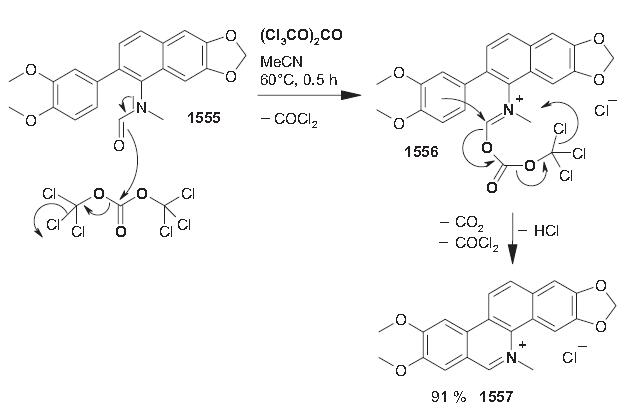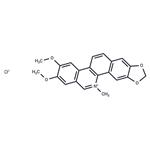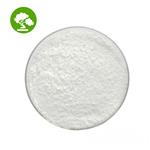A solution of 1555 (0.102 g, 0.278 mmol) and triphosgene (0.179 g, 0.602 mmol) in acetonitrile (2.5 mL) was stirred at 60 C° (bath temperature) for 0.5 h. After the addition of ice/water, a yellow precipitate was collected by filtration and recrystallized from ethanol/diethyl ether to directly afford nitidine chloride (0.098 g, 91%); mp 285–292 C°.

An isocyano group can serve as both a protecting group for the amino function, and, due to its electronic effect, as an activating group as well. These two functionalities are employed in a synthetic route whereby an amino function has to be protected and a condensation reaction is performed at the a-carbon atom, for which activation is required.
3,4-Fused tryptophan analogues 1563 and 1564 contain a ring that bridges the a-carbon and the 4-position of the indole ring, thus limiting the conformational flexibility of the side chain. The synthesis proceeds from N-formylated 40-bromotryptophan 1558 via isocyanide 1559, 2-propenoate 1560, and Pd-catalyzed cyclization of the a-2-propenyl dl-tryptophan derivatives 1561 and 1562 to give both the seven- and eight-membered constrained ring analogues 1564 and 1563. Dehydration of the formamide 1558 with triphosgene affords the isocyanide 1559 in 75% (87%) yield.




